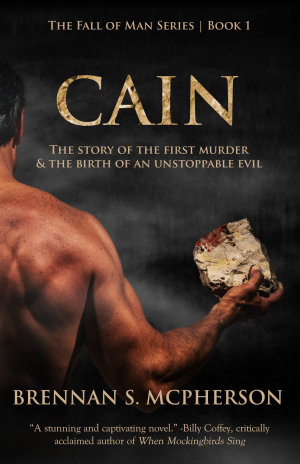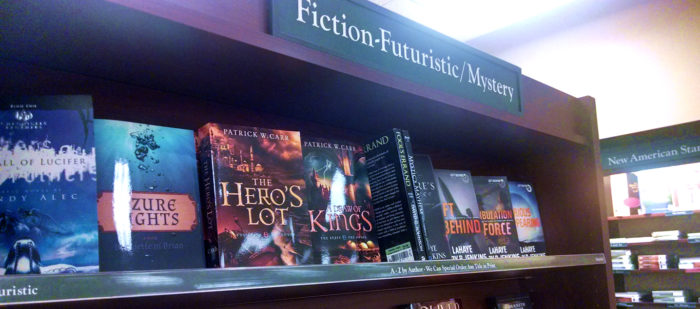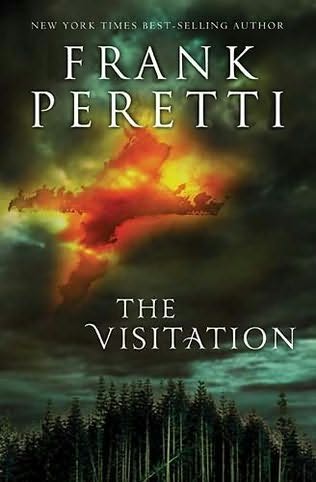Professing To Be Wise, They Became LeFous
Pundits are excited because Disneyâs coming Beauty and the Beast remake will supposedly turn the sidekick LeFou âgay.â Says director Bill Condon of the March 17 release:
LeFou is somebody who on one day wants to be Gaston and on another day wants to kiss Gaston. ⌠Heâs confused about what he wants. Itâs somebody whoâs just realising that he has these feelings. And Josh makes something really subtle and delicious out of it. And thatâs what has its payoff at the end, which I donât want to give away. But it is a nice, exclusively gay moment in a Disney movie.
So it sounds like Disney has âtold you whose team they prefer to be onâ: for marketing purposes, anyway, the team of one of the worldâs fastest-growing religions, sexualityism.
How should Christians respond to such attempts at religious teachings?
1. This is nothing new for Disney.
In 1997, evangelicals announced a boycott of the âno longer friendly to the familyâ Disney company (in the words of Dr. James Dobson). Now-defunct Disney-owned Miramax was making âgayâ-friendly movies, and Disney parks hosted âgay days,â making the company a relatively early adopter of the LGBTQ agenda. And thus, many Christians responded.
Once Disney toned back, and once the rest of popular culture was clearly making boycotts nigh-impossible, the boycott faded. Solution: if your beliefs violate âfamily values,â simply redefine. Family is âa group of people based in love.â When every day is âgay day,â no day is.
2. Creators want to be âfirstâ at something; it gets attention.

Yo Frozen, we’ll let you finish, but Enchanted had the best fairy-tale-romance subversion of all time.
Recall all the hoopla about Frozen supposedly being the âfirstâ Disney film to feature a Strong Female Fighting Character (forgetting Mulan, 1998), and the âfirstâ Disney film to challenge the princess-instant-marriage stereotypes (forgetting Enchanted, 2007)?
Frozen was not âfirstâ at either theme, rendering such boasts even less effective than the nerd who replies to a YouTube video or TV show review with the comment âFirst!â
Regarding the argument of which Disney character was the âfirstâ homosexual, the jokes are already being made. Itâs a rather silly argument, reallyâan âSJWâ equivalent to fans who argue whether Wonder Woman or Aquaman would win in a fight.1
3. Even if you support the religion, this news is so lackluster.
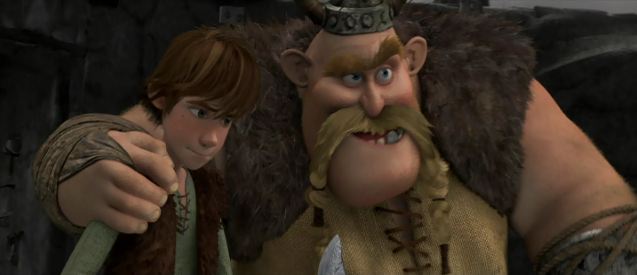 Remember the Abramsverse Sulu incident of 2016? The Gobber incident of 2014? Or even the Finding Dory incident also of 2016? None of these are truly the great strides into public ârepresentationâ history that LGBTQ advocates would surely want. In fact, these are such low-key examples that the people who want to push them as great-answers must instead distribute the âsecret codeâ before the movie, via blog posts and interviews.
Remember the Abramsverse Sulu incident of 2016? The Gobber incident of 2014? Or even the Finding Dory incident also of 2016? None of these are truly the great strides into public ârepresentationâ history that LGBTQ advocates would surely want. In fact, these are such low-key examples that the people who want to push them as great-answers must instead distribute the âsecret codeâ before the movie, via blog posts and interviews.
4. This will likely not change the heart of the story.
In each of those stories, the heart of the story remains very âtraditionalâ relationships: Captain Kirk and the crew he respects and loves, Hiccup and his girlfriend Astrid along with his parents, and Dory and her long-lost parents.
If the director and Disney preserves the true soul of Beauty and the Beast, that a strong yet fair woman could truly learn to love a hideous beast and aid in his redemptionâwhy all this attention for a side character who has little to do with this central plot?
Even if the new version shows LeFou as âgay,â would that change the absolutely central imaging of sacrificial love, respect, devotion, and commitment in the âtale as old as timeâ?
As I wrote in this satire of the Gobber incident of 2014:
âThis assault on our values using Hollywood propaganda and the dark forces who oppose marriage will be rejected by honest hard-working Americans,â said Robert McBoreson, president and chair of the Family Values Research Heritage God Bless and Save America Foundation, utterly incognizant of the fact that the Hollywood film brainwashes viewers by showing the journey of a maturing young man to find himself, while also respecting the stories and perspectives of both his father and mother, who turn out to have had a short and yet blissful life of committed and romantic marriage that is upheld as the storyâs ideal.
5. People thrive off getting us worked up for/against these things.
One investigation (albeit by a highly biased website itself) showed that at least in one case, the same company owned two outrage-mill websites, both a âleft wingâ and âright wingâ website. In at least this case, the company had published a nearly identical outrage-mill story, but simply switched a few words around for the targeted audiences.
This is an extreme example. But it does remind us that with popular-culture controversies like this, the religion of LGBTQ-ism doesnât âwinâ nearly as much as the clickbait publishers.

6. LeFou is the comic, stupid sidekick of the vainglorious villain.
This whole incident is another case of questionable âstridesâ for the sexualityism religion. One could conspiracy-theorize (but I would not) that this is, in fact, a scathing subversion of that religion. After all, the original LeFou is not a hero. He is a simpering buffoon with a man-crush on Gaston, who is an even more thoughtless and narcissistic fool. âLeFouâ literally means the foolâand so, the âfirst gayâ character is a fool. How is this not insulting?
7. This is still bad, in part because false religion makes stories worse.

We truly miss seeing you guys.
I do grieve when all these pundits, rumors, and even story-creators themselves get all excited about these fleeting notions. These elements of the stories will not last because this religious movement will not last. When people pay frivolous attention to the vulgar trim on one single characterâs costume, they miss beauties of any âtale as old as time.â And increasingly, stories will be made solely to serve religious agendas, rather than vice-versa.
This is why my wife and I recently quit viewing âSupergirl,â four stories into the second season. After a largely successful and supergeek-pleasing first season, the creators wanted to cause-jack season 2. They took one character, gave her instant same-sex attraction, and insisted on showing this in an unrealistic, propagandistic light. It made the story suffer.
Beauty and the Beast, superhero tales, and other fantastical stories may indeed prove to become timeless. But this religion has no chance of lasting for eternity.
I donât know if I care to see the new Beauty and the Beast. Right now the political/religious cause has subsumed all. Even if the moment turns out to be nothing, especially without the Secret LGBTQ Code, all this leaves a sour taste.
Disney, you had one job: remake one of your most classic animated features in a manner like your other popular live-action remakes, cast popular actors, promise nostalgia and originality all at once. But that wasnât good enough. You had to go and act like this story only exists to preach a bad sermon. This is worse than the most moralistic Christian films.
8. This isnât that bad because seeing the story wonât make you sin.
But if you do see Beauty and the Beast, it wonât make you sin.
Unless youâre tempted toward same-sex attraction yourself (which is simply another point on the Bibleâs hideous yet ordinary lust-sin spectrum), the story can only âoffendâ you.
Creators and marketers have no way to know whether you used your ticket money to âsponsorâ their propaganda campaign or simply meant to ignore that and enjoy the story. So most of the âboycottâ logic Christians attemptâe.g., âif you go and see that then you are subsidizing sinââdoesnât work. It canât work. If you live in reality, you would âsubsidize sin.â
This ends up being closer to a âmeat sacrificed to idolsâ issue, again (1 Corinthians 8-10). In the very chapter where Paul should have used the âboycottâ logicââif you buy that meat then you are subsidizing sinââhe did not. He only spoke of loving weaker brothers.
Who are the âweaker brothersâ here? Do you know a Christian struggling with same-sex attraction who is bothered by the movie? Then donât invite that person to see it, or donât mention you are seeing it, or consider not seeing the movie at all. Do you know a more-conservative Christian who thinks that seeing the movie is sinful, and would âstumble,â that is, be tempted to the same actual sin if you saw the movie?2 Then same solution.
But in either case, letâs recall where all sinsâsame-sex attraction, homosexual lifestyles, arrogance, and the root cause of all, idolatryâactually come from: the human self, not movies or any external thing (Mark 7). And always point not to fear of specific sins or their reflections in popular culture, but to Jesus Christ, beast-redeeming hero older than time.
Updated March 4: what’s actually in the film?
A professing Christian mom has seen Beauty and the Beast and recounts exactly what content is in it.3 As I suggested above, the actual “gay moments” sound at once fairly terrible and yet not as annoying as some would overplay them.
The bad:
1) Le Fou (Gastonâs sidekick) is clearly gay and clearly infatuated with Gaston much more obviously than any gay character has appeared in any other Disney movie. Unlike in Finding Dory, the homosexual content in this movie will not be missed by adults and older children for sure.
2) Le Fou starts giving Gaston a hand / shoulder / ear massage during the Gaston song that is definitely sensual from Le Fouâs perspective.
The tragicomic:
3) At one point toward the end, Gaston gets very close to Le Fouâs face; they are face to face and it looks like a romantic angle but Gaston is actually angry and yelling. It draws a direct contrast between what Le Fou wants and the fact that Gaston has really just been using his devotion all along
4) In the final dance scene, Le Fou is dancing with a woman but at the very end he cuts in on another couple and dances with a man. It was made to appear as a fortuitous accident.

Apparently cross-dressing is still allowed to be funny.
The just-plain comic:
In the final battle scene, three men are attacked by the wardrobe and dressed as women. Two of the men run off in horror and terror but the third decides he likes it and runs off happy as the wardrobe sings, âBe free.â
That last sounds nearly identical to the original 1991 animated film. In any case, apparently we are still “allowed” to laugh (and wince) at men who “crush” on other men, and men who dress like women.
Disney still clearly wants to play this up as some great cultural moment for the Sexualityism revolution. However, Disney also wants to have its “gay” wedding cake and eat it too. I’m still not hearing much that really separates this film’s characterization of LeFou from the LeFou of the original 1991 animated film. In either, LeFou is a tragicomic figure–a toadie and a man-crushing sycophant. How exactly is this supposed to aid the Sexualityist crusade?
And this much stays true: you still need to receive the Secret LGBTQ Culture Code beforehand, or you won’t actually know what a “revolutionary” moment this is for the cause.
Regardless, Christians are free to see or not see the film. We don’t need to feel any “command,” either to boycott the film because “Hollywood” is full of such unqualified evil, or to see it because It Must Be Engaged. Our only command is to avoid personal temptation, and for parents, to engage the story with your children if you do see it.
Meanwhile, the story itself follows âThe Harkness Lawâ or âThe Gobber Principleâ:
Most mainstream, popular storiesâ emotional cores are based on âtraditionalâ relationships. Meanwhile, other relationships are relegated to side references, comic relief, or obvious political/social agenda add-ons.
Thus, even in this generation and despite decades of cultural propaganda, the film’s title and central theme have stayed the same. It is not Beauty and the Beauty, or Beast and the Beast, but Beauty and the Beast.
- Aquaman wins, but only if he can fight Wonder Woman in the ocean. ↩
- This is not the same thing as a conservative Christian who would simply judge you apart from Scripture if you saw the movie. Randy Alcorn explains the difference between actual âstumbling blocksâ and mere âoffendednessâ in his article A Stumbling Block: What It Is and Isnât. ↩
- As of 1:45 p.m. Eastern, this website was unavailable due to a server overload. ↩
































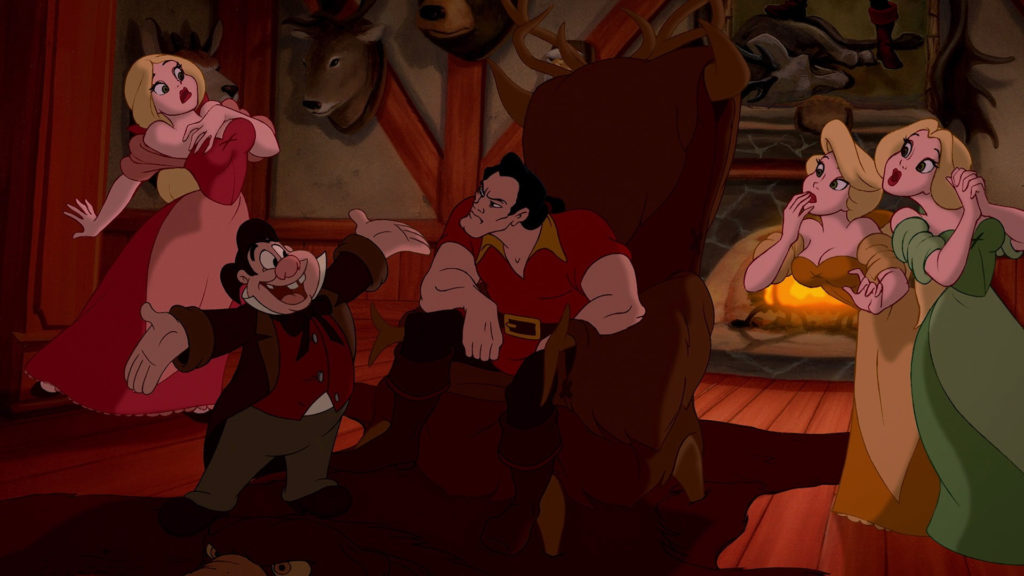

 fans go too far in insisting on their opinions â over contrary opinions, and contrary evidence, and obvious disinterest. Sometimes, fandoms really do attack.
fans go too far in insisting on their opinions â over contrary opinions, and contrary evidence, and obvious disinterest. Sometimes, fandoms really do attack.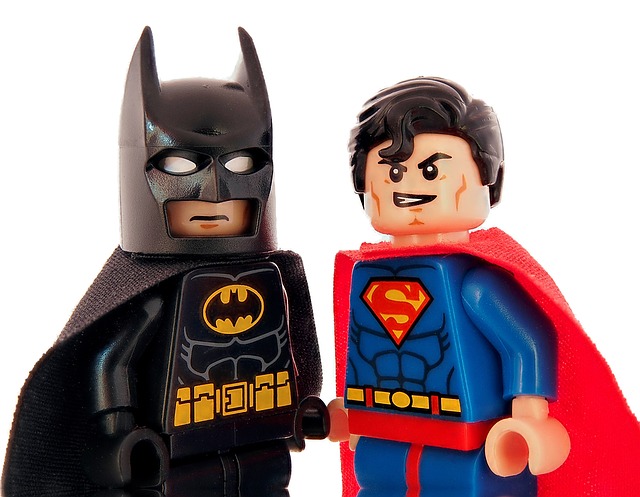

 5. Batman can drop the beat and Alfred plays a sick electric guitar. Who knew such Bruceâs mansion/the Bat Cave harbored such talent?
5. Batman can drop the beat and Alfred plays a sick electric guitar. Who knew such Bruceâs mansion/the Bat Cave harbored such talent?
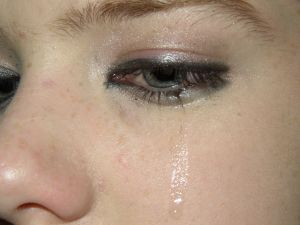



 Is allegory dead? Are people still writing it? Okay, never mind, I know people are writing it, but are there any good ones anymore? Good allegories only seem to come out once a generation, but why are there so many pretenders scratching out half-baked stories that flop in a flash?
Is allegory dead? Are people still writing it? Okay, never mind, I know people are writing it, but are there any good ones anymore? Good allegories only seem to come out once a generation, but why are there so many pretenders scratching out half-baked stories that flop in a flash? Do you know why Aslan worked so well? Because C.S. Lewis didnât see him as allegorical. In A Life Observed, biographer Devin Brown reports that Lewis didnât say, âThis is Jesus;â he said, âThis is what Jesus would say and do if he were Aslan.â He made Aslan a character that existed in his own world.
Do you know why Aslan worked so well? Because C.S. Lewis didnât see him as allegorical. In A Life Observed, biographer Devin Brown reports that Lewis didnât say, âThis is Jesus;â he said, âThis is what Jesus would say and do if he were Aslan.â He made Aslan a character that existed in his own world.



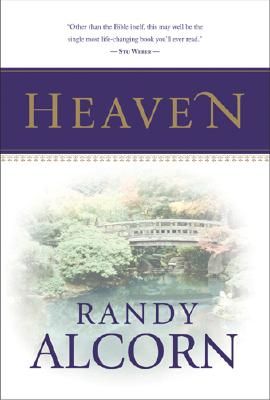
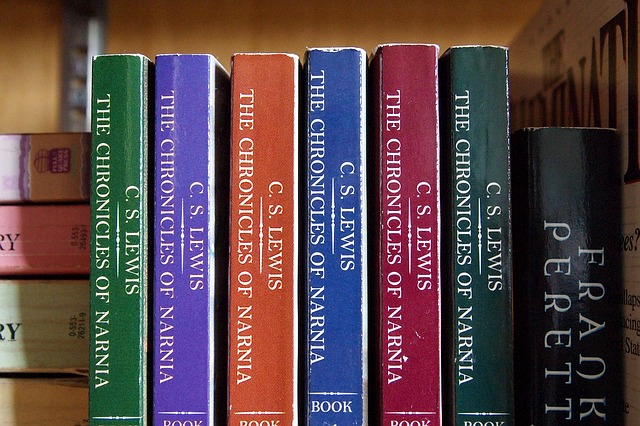
 Why do we create stories?
Why do we create stories? Decry the abundance of Amish, romance, and other genres that dominate the market?
Decry the abundance of Amish, romance, and other genres that dominate the market? Iâm going to suggest that view is too narrow. Itâs too easy for Christian storytellers to become content boxing ourselves into an either/or scenario. Either we publish Christian fiction or we donât publish anything.
Iâm going to suggest that view is too narrow. Itâs too easy for Christian storytellers to become content boxing ourselves into an either/or scenario. Either we publish Christian fiction or we donât publish anything. Is our purpose to write stories that fit into a box? Or rather, is it to be sub-creators, as Tolkien put it, whose work reflects in small fragments the Greatest Story? To tell tales of heroism, sacrifice, love, loyalty, and redemption?
Is our purpose to write stories that fit into a box? Or rather, is it to be sub-creators, as Tolkien put it, whose work reflects in small fragments the Greatest Story? To tell tales of heroism, sacrifice, love, loyalty, and redemption?
 This past week, I saw the TV ad for the upcoming The Shack movie. I’d seen the trailer some time ago, but was dismayed that the promotion was reaching a TV audience. And in LA. We don’t often hear about “Christian” projects here.
This past week, I saw the TV ad for the upcoming The Shack movie. I’d seen the trailer some time ago, but was dismayed that the promotion was reaching a TV audience. And in LA. We don’t often hear about “Christian” projects here. That being said, I suggest one of the central problems of the story surfaces within the discussion of this rather peripheral issue. The Shack has little use for the Bible. Hence, God the Father is easily replaced by the needs of the character.
That being said, I suggest one of the central problems of the story surfaces within the discussion of this rather peripheral issue. The Shack has little use for the Bible. Hence, God the Father is easily replaced by the needs of the character.